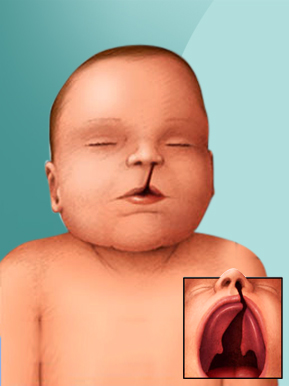Facial cleft is a type of facial deformity which can be seen the patients who are affected with the facial disorders. It is comparatively less seen than that of the patients with the cases of cleft lips and cleft plates. Therefore, it is important to handle these cases with more care to avoid any kind of complications in the condition of the patients. According to the Tessier classification, the facial clefts are of four types which includes mid line clefts, paramedian clefts, orbital clefts and lateral clefts. On the other hand, according to the Van der Meulen classification the facial clefts have been classified into internasal dysplasia, nasal dysplasia, nasomaxillary dysplasia and maxillary dysplasia. In this way, there are several types of the facial defects which can be seen in the patients who are affected with the facial defects occurring in patients of different age groups.
Facial clefts are treated based on the location of the cleft and the complexity of the case of the patient. The surgeries done in the cases vary to a great extent depending on the structures involved in the facial cleft deformities. Encephalocele is one of the most commonly seen cranio anomaly which occurs in combination with the facial clefts. The bony gap is targeted in the surgery and the base portion of the brain is protected throughout the procedure to prevent damage to the brain in any form. In this way, the surgeons can treat the case and prevent any harm or damage to the brain. Clefts associated with the lower or upper eyelids re treated by closing the respective eyelids so that the eye is not harmed. Facial clefts connected with the orbital floor or even the maxilla are treated by carefully reconstructing the base of the orbital floor without disturbing the functioning of the eyes in any way. In the nasal area, grafts are used from the ears to ensure the covering of the absent area in the nose thus leading to the proper functioning of the nose in the patients body. Nasal reconstruction is recommended by the surgeon if the above procedure is not possible in the patient. In the mid face when the facial clefts occur then the soft tissue management is of great importance. The soft tissue reconstruction is done at an early stage than that of the bony tissue reconstruction to ensure proper healing of the area after the completion of the procedures. Rene Le Forts incision lines are used in order to proceed in the right direction in the surgical procedures. Therefore, the surgeon can perform the procedures with much ease.
In this way, facial clefts can be treated tactfully with the help of the experienced surgeons who will be able to handle every complicated in the best way and treat the patients with patience and revive them back to their early normal condition. Thus, the treatment of the facial clefts is improving as new surgical techniques and methods are being introduced in the field of oral surgery.








